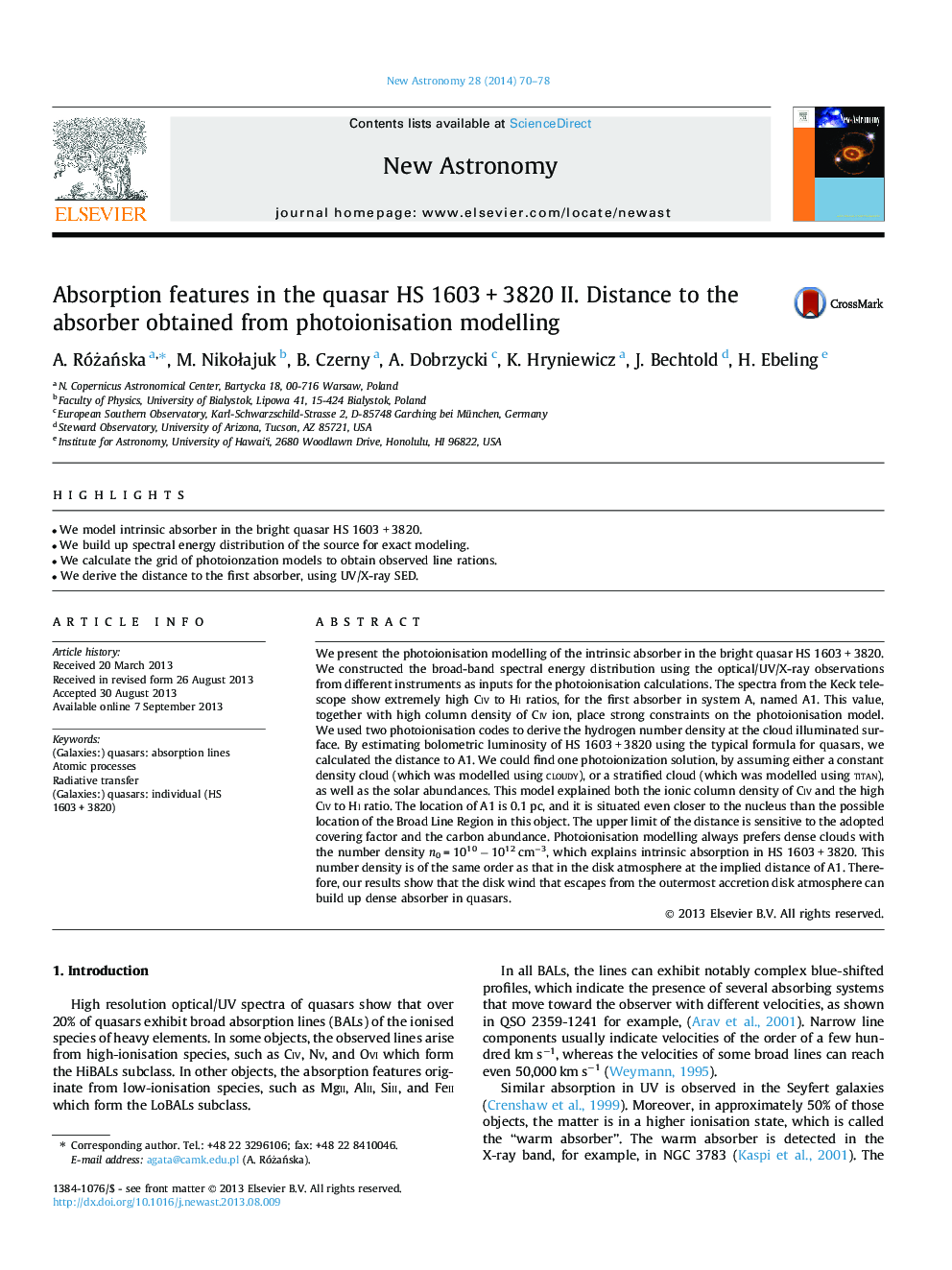| کد مقاله | کد نشریه | سال انتشار | مقاله انگلیسی | نسخه تمام متن |
|---|---|---|---|---|
| 1779018 | 1523750 | 2014 | 9 صفحه PDF | دانلود رایگان |

• We model intrinsic absorber in the bright quasar HS 1603 + 3820.
• We build up spectral energy distribution of the source for exact modeling.
• We calculate the grid of photoionzation models to obtain observed line rations.
• We derive the distance to the first absorber, using UV/X-ray SED.
We present the photoionisation modelling of the intrinsic absorber in the bright quasar HS 1603 + 3820. We constructed the broad-band spectral energy distribution using the optical/UV/X-ray observations from different instruments as inputs for the photoionisation calculations. The spectra from the Keck telescope show extremely high Civ to Hi ratios, for the first absorber in system A, named A1. This value, together with high column density of Civ ion, place strong constraints on the photoionisation model. We used two photoionisation codes to derive the hydrogen number density at the cloud illuminated surface. By estimating bolometric luminosity of HS 1603 + 3820 using the typical formula for quasars, we calculated the distance to A1. We could find one photoionization solution, by assuming either a constant density cloud (which was modelled using cloudy), or a stratified cloud (which was modelled using titan), as well as the solar abundances. This model explained both the ionic column density of Civ and the high Civ to Hi ratio. The location of A1 is 0.1 pc, and it is situated even closer to the nucleus than the possible location of the Broad Line Region in this object. The upper limit of the distance is sensitive to the adopted covering factor and the carbon abundance. Photoionisation modelling always prefers dense clouds with the number density n0 = 1010 − 1012 cm−3, which explains intrinsic absorption in HS 1603 + 3820. This number density is of the same order as that in the disk atmosphere at the implied distance of A1. Therefore, our results show that the disk wind that escapes from the outermost accretion disk atmosphere can build up dense absorber in quasars.
Journal: New Astronomy - Volume 28, April 2014, Pages 70–78